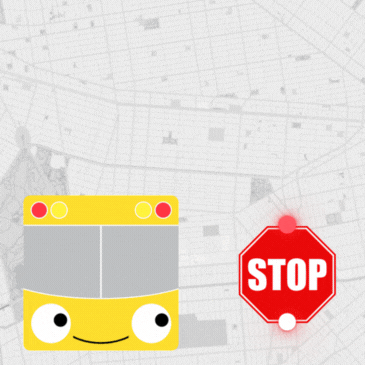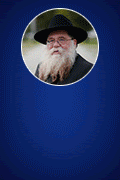
Weekly Story: The Importance of Having a Camp Experience
by Rabbi Sholom DovBer Avtzon
This week Chasdei Avrohom Eliezer is holding its annual fundraiser Camp Fund drive, to help sponsor scholarships for children to attend camp.
The camp fund was established almost immediately after the 17 year old, Avrohom Eliezer hy”d Goldman was murdered on the 27th of Sivan 5737 (1977), while he was speaking in a phone booth with a Jew he would visit on Fridays, reminding him to come to the Rebbe’s minyan to name his baby daughter.
The Rebbe was asked how the family, friends, and neighbors, Rabbi and Mrs. Eli and Leah Lipsker should memorialize his life. In that letter, they wrote a few options and thoughts of theirs, and the Rebbe underlined to create a camp fund.
Thus the Avrohom Eliezer Camp fund was founded, 49 years ago.
During that time it gave thousands of children the opportunity to be with their friends, and alleviated tremendous stress from the parents who are not able to pay the ever rising cost of camp for their children. They
On a personal note, Avremi is my brother-in-law whom I never had the opportunity to meet. More recently, this Sunday my son and daughter-in-law, Eliyahu and Baila named their newborn son Avrohom Eliezer.
Before I write the weekly story, I will note the following. As many know there is a question if one should give a name after someone who passed away at a relatively young age, and therefore many are hesitant to do name a child after them. Rabbi Yitzchok Raitport once asked the Rebbe if it is proper to name a child after a relative of his Rebbetzin who was brutally beaten to death by the Nazis yimach shemum, at the tender age of 12.
The Rebbe replied, generally speaking, when one names a child after someone who passed on, it is an honor for the deceased that a live person is carrying their name. However, when an infant is given the name after one who was killed al kiddush Hashem (just because they are Jewish), than it is an honor for the infant to carry that name.
So on behalf of the family and more importantly, on behalf of the children who will enjoy a dream summer experience, I ask that you please participate in this drive, in whatever amount you are able to, in memory of a young bochur who was murdered because he stood out proudly as a Jew.
As always, your feedback and comments are greatly appreciated and most welcomed.
To contribute please click onto the link https://raisethon.com/thecampfund
Author’s note: I heard this a few years ago from Rabbi Moshe Lazar. However, I did not transcribe it then, so the wording is not exact, but it is the concept of what the Rebbe said to him and his reply.
In 5716 (1956) Rabbi Moshe Lazar, who was then a student in 770, wrote to the Rebbe a thought of perhaps Lubavitch should open an overnight camp for boys. [Three years earlier in 5713 (1953) Rabbi Yaakov Yehudah (JJ) Hecht, opened an overnight camp for girls.]
For some reason instead of replying with an answer, the Rebbe said he should come in and discuss it.
Being that Rabbi Lazar’s friend Rabbi Kehos Weiss, was a participant in this concept and would be playing a major role in running the camp, he too entered the Rebbe’s room to answer any question the Rebbe might ask.
The Rebbe began by asking one question; Why do you think it is important to open up an overnight camp?
At that moment Reb Moshe felt faint or perhaps actually fainted.
Reb Kehos helped him and the Rebbe said, Take him out and when he recovers and has strength he can return and answer the question.
A short time later they reentered the Rebbe’s room and Reb Moshe said, the schools are closed for the summer. Even those boys that we enroll in a day camp, our influence on them is limited. Every day after camp they go back to their home and environment they came from. Who is going to remind those children who are in public school to make a brocha before and after eating, or to say Shema at night. Shabbos there is no camp, so what type of exposure do they have of a Shabbos?
However, if we enroll him in an overnight camp, the exposure to bonifide Yiddishkeit is every moment of the day throughout the entire week, without them being exposed to anything else.
[If my recollection is correct, he gave an additional one or two reasons.]
Hearing this the Rebbe gave his permission to open the camp and gave them a brocha that they should succeed in their mission.
That summer was the first time the Rebbe left the five boroughs of New York city, as he went upstate to visit both Camp Emunah and Gan Yisroel. The following year the Rebbe once again made this trip, and then three years later in 5720 (1960), he did so for the third and final time.
Rabbi Lazar told me that after the Rebbe’s visit the first year the Rebbe said to him, “Ich Hub nit fuhrgeshtelt azah hatzlacha – I had not envisioned such a tremendous success,
So please partner with the camp fund and enable hundreds of children to benefit from their astounding camp experience. https://raisethon.com/thecampfund
A Taste of Chassidus Beha’aloscha es haneiros 5734
The possuk says when you light or elevate the candles, the seven lights should shine towards the middle candle. Rashi explains that the wicks of the three candles on each side were facing the middle candle. So the question becomes twofold:
A. Why at the beginning of the Possuk, there is no mention of how many candles there are, but at the end there is a number given?
B. Why at the end does it say that the seven candles should shine towards the middle candle, when only the six candles, three from each side that shine towards the middle candle?
The Frierdiker Rebbe explains that the candles mentioned in this possuk, are referring to two different aspects. When the possuk begins and says, when you elevate the candles, it is referring to the Neshoma of every Jew. The reason why the Neshoma is called a candle is because it has a similarity to the fire of the candle. Just as fire has the tendency to rise because it wants to unite with its source, so too every neshoma has the tendency and desire to elevate itself and come closer to Hashem, rise to its source.
However, most Neshomos face an obstacle. The body conceals the fact that the neshomos are connected to Hashem. Subsequently the Neshoma of most people don’t have that knowledge to attach themselves to Him. Therefore, there’s a commandment on Aharon the high priest, to reveal this connection so that each Neshoma can actually come closer to Hashem.
While the lights at the end of the possuk are not referring to the souls but rather they are referring to the sources of light that are some place in heaven. Even though the Torah notes that there are two sources of light in heaven, the Sun and the Moon, that is only on the very revealed level, but in reality, there are another five sources of light.
This explains why in the beginning there is no number and at the end there is a number. Being that the simple meaning of the passage is that Aaron should light the menorah and the deeper meaning is that he should help elevate in the neshoma of every Jew, that demonstrates that is a connection between the summer of a Jew and the menorah. Furthermore, this is why there are seven candles in the Candelabra, while the purpose of every soul is to serve Hashem, however, and generally speaking every Jew goes in one of seven paths to accomplish it.
The Neshoma as it is before it begins its descent into this world (when it is in Atzilus) is completely pure, (as we say in davening Tihorah he -It is pure). The reason Hashem causes it to descend into the physical world is in order that it should elevate the world and subsequently, it itself becomes elevated. Since, when it fulfills a mitzvah it becomes elevated to its source.
This will be understood once we explain a saying /teaching of the Maggid on this possuk. He explains that the Torah is telling us we are to elevate ourselves when we do the mitzvos, as the candle is referring to the mitzvos themselves.
Every mitzvah, when it is done properly, the person fulfilled Hashem’s will. However, as the Alter writes in Tanya, the first two mitzvos of the Ten Commandments, I am your G-d and There shall be no other G-d besides Me, are the source of all mitzvos. If we love Hashem, He is our G-d, and f we fear Him, there will be no other desire in our life that is opposite Him.
So Hashem is instructing Aharon to elevate the fulfillment of the mitzvos, that they should be done with love and fear of Hashem. By accomplishing that we elevate our Neshoma to its source in Atzilus, where it is completely pure.
However, Hashem asks us to accomplish something greater than that. He wants all seven types of Neshomos, no matter which trait you use to serve Hashem to not only shine like they do in their, but to become connected to the source of where the Neshoma itself comes from.
That is the essence of Hashem Himself (just as a child comes from the essence of their father).
Once we accomplish that, we have not only elevated ourselves to our ultimate source, but we have also elevated every mitzva (which comes from His will) to Hashem’s essence itself.
Rabbi Avtzon is a veteran mechanech and the author of numerous books on the Rebbeim and their chassidim. He is available to farbreng in your community for Gimmel Tammuz or Yud-Beis Tammuz and can be contacted at avtzonbooks@gmail.com.












Mushkie
Someone in our weekly virtual farb group mentioned that when naming a baby after someone who was brutally murdered (even al kiddush Hashem), the name should be slightly altered, even if only in spelling, as Akiva is correctly spelled with a Hei at the end (as revealed to Or Zaruah in a dream), but since Rabbi Akiva was brutally murdered, we give the name and spell the name with an Alef at the end.
P. McDonald
Rabbi Moshe Lazar great Rabbi
Tomim
Russian Chief Rabbi’s dad?